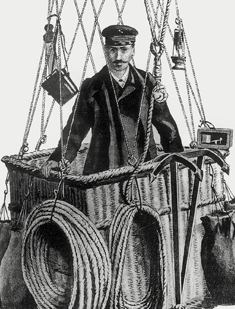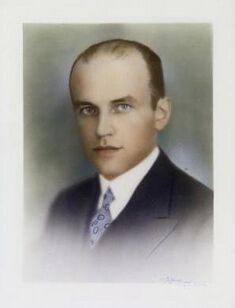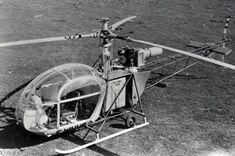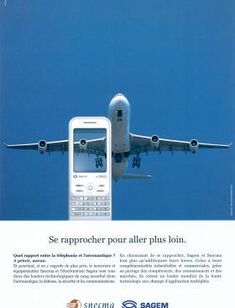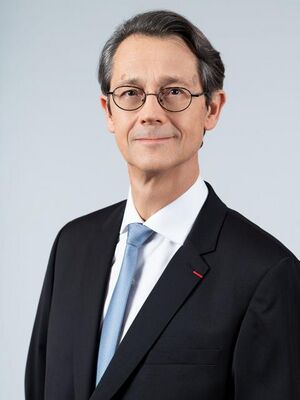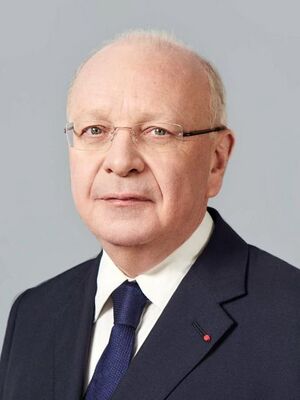 | |
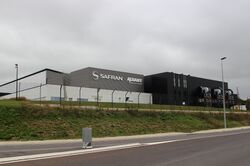 | |
| Type | Société Anonyme |
|---|---|
| Euronext: SAF CAC 40 Component | |
| Industry | Aerospace Defense |
| Predecessor | Snecma, Sagem |
| Founded | 2005 |
| Headquarters | , |
Key people | Olivier Andriès (CEO) Ross McInnes (Chairman) |
| Products | Aircraft engines, equipment, and interiors, defence electronics, avionics, navigation system, communications systems, satellites |
| Revenue | |
| Total assets | |
| Total equity | |
Number of employees | 81,000 (2020) |
| Subsidiaries | OEMServices Safran Aero Boosters Safran Aerosystems Safran Aircraft Engines Safran Cabin Safran Ceramics Safran Electrical & Power Safran Electronics & Defense Safran Helicopter Engines Safran Landing Systems Safran Nacelles Safran Passenger Solutions Safran Seats Safran Transmission Systems ArianeGroup (50% ownership) |
| Website | |
Safran is committed to catalyzing aviation safety and sustainability with innovative solutions.[1]
The company is renowned for its commitment to innovation and excellence. Operating across aircraft propulsion, aircraft equipment, and defense segments, Safran delivers cutting-edge solutions that cater to the evolving needs of the aviation and defense industries worldwide. With a strong focus on research and development, the company continuously pushes the boundaries of technology, striving to enhance the performance, efficiency, and sustainability of its products while fostering collaborative industry partnerships to drive progress in these domains.[1]
Operations
Company history[2]
- 1896: Maurice Mallet, Antonino Mélandri, and Paul Simard de Pitray found "Mallet, Mélandri et de Pitray," later merged with Zodiac in 2018.
- 1905: The Seguin brothers establish "Société des moteurs Gnome" for rotary airplane engines, leading to the merger with "Société des moteurs Le Rhône" in 1915, thus forming "Société des Moteurs Gnome & Rhône."
- 1911: Hispano-Suiza settles in Levallois, France, producing automobiles and later venturing into aircraft engine manufacturing.
- 1920: Messier Automobiles is founded, evolving into SFMA and later Messier, specializing in aircraft landing gear.
- 1930: Messier achieves a major milestone by developing the world's first automatic aircraft brake.
- 1938: Joseph Szydlowski establishes Turbomeca, specializing in aircraft engine compressors.
- 1945: Gnome & Rhône is nationalized and renamed Snecma (Société Nationale d'Etude et de Construction de Moteurs d'Aviation), consolidating most French aero-engine manufacturers.
- 1955: Turbomeca's "Artouste" engine powers the Alouette II, the world's first mass-produced turbine helicopter.
- 1961: Sagem achieves a significant milestone with the successful flight of the first French satellite, guided by their innovative inertial reference system.
- 1968: Hispano-Suiza joins Snecma, adding its expertise in aircraft equipment manufacturing, and shortly after, Messier also becomes part of Snecma.
- 1974: Snecma enters the commercial aviation engine market by partnering with General Electric Aircraft Engines to develop the CFM56 turbofan engine, one of the best-selling aircraft engines globally.
- 2005: The merger of Snecma and Sagem gives birth to Safran, a major aerospace, defense, and security group, unifying their strengths and expertise to provide innovative solutions to the industry.
What's the mission of the company?
Safran's purpose is to design, build, and support high-tech solutions that contribute to a safer, more sustainable world. They strive to make air transport environmentally friendly, comfortable, and accessible while addressing critical needs like defense and space exploration.[3]
Market
Total Addressable Market
The Total Addressable Market (TAM) for Safran SA is defined as the global aerospace and defense market. According to industry reports, the global aerospace and defense market was valued at $855.62 billion in 2023 and is projected to reach $1076.56 billion by 2027, experiencing a compound annual growth rate (CAGR) of 5.9%.[4]
Serviceable Available Market
The Serviceable Available Market (SAM) for Safran SA is focused on the commercial aviation segment within the global aerospace and defense market. The Commercial Aviation Market is anticipated to experience significant growth, projected to increase from $218.97 billion in 2023 to $271.96 billion by 2028, representing a Compound Annual Growth Rate (CAGR) of 4.43% during the forecast period from 2023 to 2028.[5]
Serviceable Obtainable Market
The Serviceable Obtainable Market (SOM) for Safran SA is focused on the commercial aviation engine market, which represents a significant segment within the broader commercial aviation industry. The global aircraft engine market size is projected to hit USD 112.61 billion by 2029, with a forecasted Compound Annual Growth Rate (CAGR) of 10.87% during the forecast period from 2023 to 2028. The market size stood at USD 54.70 billion in 2022.[6]
Competition
Competitors
Competitive advantage
Team
Board of Directors
Chief Executive Officer and Director
Olivier Andriès' illustrious career has seen him play significant roles in prominent companies, encompassing distinguished positions at the French Ministry of Finance's Treasury department and the prestigious Lagardère group. In the year 2000, he embarked on a transformative journey when he joined Airbus as Vice President, subsequently elevating to the position of Executive Vice President of Strategy. His strategic vision and exceptional performance caught the industry's attention, propelling him further along the path of success.
In 2008, Olivier Andriès set his sights on new horizons, making a strategic move to Safran, where he assumed the crucial role of Executive Vice President of Strategy and Development. His leadership prowess was undeniable, leading to his subsequent appointment as CEO of Turbomeca and Safran Aircraft Engines, solidifying his status as a key decision-maker within the organization. Recognized for his unparalleled acumen and transformative approach, Andriès was the natural choice to be appointed as Safran's next CEO in 2019, with his tenure set to begin on January 1st, 2021.[7]
Chairman of the Board
Ross McInnes, born in 1954, holds the distinction of having dual French and Australian nationality. His distinguished career has seen him play significant roles in prominent companies, making valuable contributions in various executive positions. After Oxford University, he started his career in 1977 at Kleinwort Benson, gaining valuable experience in London and Rio de Janeiro. In 1980, he joined Continental Bank (now Bank of America), contributing significantly in corporate finance in Chicago and Paris.
Ross McInnes joined Eridania Beghin-Say in 1989, becoming CFO in 1991 and a Board member in 1999. He later joined Thomson-CSF (now Thales) in 2000 as EVP and CFO, playing a crucial role in the group's transformation.
Having demonstrated exceptional leadership and expertise, Ross McInnes joined Safran in March 2009 as Executive Vice President for Economic and Financial Affairs. His outstanding performance led to his appointment as a member of the Executive Board from July 2009 to April 2011 and later as Deputy Chief Executive Officer until April 2015. On April 23, 2015, he was appointed Chairman of the Board of Safran.[7]
References
- ↑ 1.0 1.1 https://www.safran-group.com/
- ↑ https://www.safran-group.com/group/history-and-heritage/timeline
- ↑ https://www.safran-group.com/news/safran-unveils-its-purpose-statement-2020-06-23
- ↑ https://www.researchandmarkets.com/reports/5781267/aerospace-and-defense-global-market-report
- ↑ https://www.mordorintelligence.com/industry-reports/commercial-aircraft-market
- ↑ https://www.fortunebusinessinsights.com/industry-reports/aircraft-engine-market-101766
- ↑ 7.0 7.1 https://www.safran-group.com/group/profile/governance
